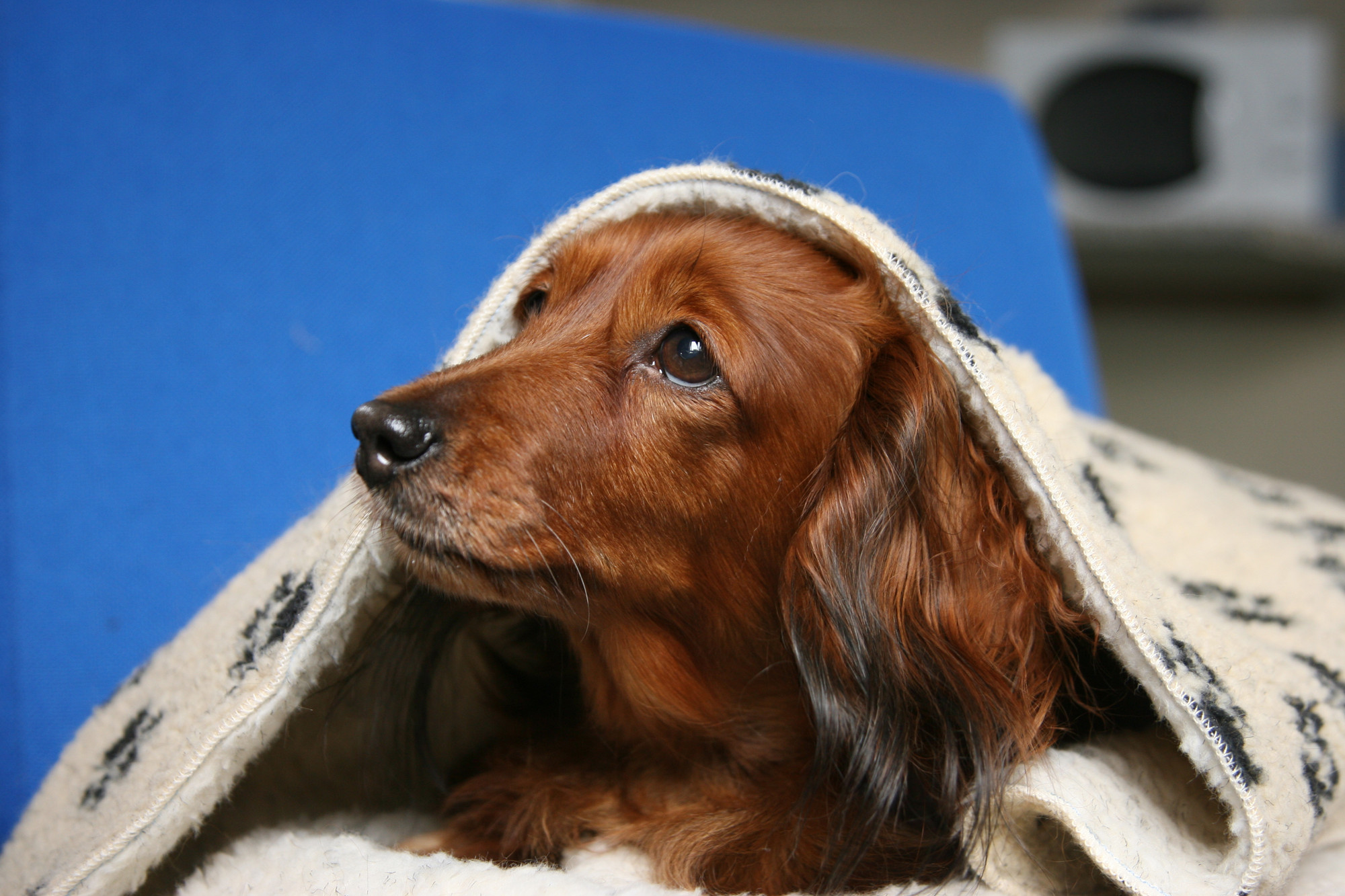
Dogs and thunderstorms
Thunderstorm anxiety can leave some dogs overwhelmed with fear.
Dogs who hate loud, high pitched or sudden noises can often struggle with thunderstorms. Storms can become more frequent during the summer months, making it a potentially stressful time for both you and your pet. While storm anxiety is a common problem, there are some ways you can help your dog to stay calm.
Note
If your dog is persistently struggling during thunderstorms, speak to a qualified behaviourist. Our team of dedicated animal behaviour experts can help reduce stress for both you and your pet.
Why are dogs scared of thunder?
There are a few reasons thunder can scare dogs. For some dogs, the sudden, loud noise can be frightening – noise anxiety is very common, especially in dogs who have experienced past trauma.
Other dogs may be more sensitive to changes in the weather. Before a storm arrives there are often changes in air pressure, humidity and wind, or there may be rainfall. When dogs sense these changes, they may begin to take steps to find protection.
Dog storm anxiety symptoms
Dogs show stress and anxiety in lots of ways, including:
- panting and shaking
- drooling
- excessive yawning
- a tucked tail and ears pinned back to the head
- toileting in the house
You may also notice a change in their body language. Anxious dogs can pace around the house, whine, bark and attempt to hide somewhere safe. They may also become more destructive by chewing as they try to relieve their stress.
Preparing your dog for thunderstorms
If you know a storm is on its way, you can help your dog to get settled beforehand.
Check the weather forecast regularly
When you know a thunderstorm is on its way, ensure you can stay at home with your dog.
Hold off on walks
Some dogs can sense changes in the weather, making them nervous. If you're caught out by a storm during a walk, your dog may also try to escape. Just in case, ensure your dog is microchipped and your contact information is up to date. In the event that your dog gets lost, it'll be much easier to return them to you.
Prepare a safe, enclosed space for them to rest
Place an item of your clothing in your dog's bed, along with any of their favourite toys and blankets. This can increase their sense of security. Dogs often like to hide in a den where they can feel safe and comfortable when loud noises are all around.
You can also try an Adaptil product, such as a plug-in diffuser or spray. These contain pheromones, which encourage your dog to feel calm.
Provide background noise
Switch the TV or radio on to something soothing, like calming music or a talking station. This provides some quiet background noise to keep your dog company. It can also muffle the early sounds of a storm.
Secure your home
Some dogs can run off or hide when they’re scared. Check your home and garden for any possible escape routes, and be sure to block off any exits. You can also shut blinds and curtains to limit any flashes of lightning.
How to calm a dog in a thunderstorm
Keep yourself calm
Stay calm and act as you normally would. Although it’s difficult to see your dog in distress, it will help them if they see that you are not concerned about the storm.
It goes without saying that you should never shout at your dog. If you have to leave your house during a thunderstorm and come home to find your dog has been destructive or toileted, do not get angry with them. Telling them off will not help and can make your dog more stressed.
Give your dog space indoors
Let your worried dog pace around, whine and hide in a corner if they want to. It’s OK to give your dog attention if it helps them relax, but once they have found a safe space and appear calm, try not to disturb them. Do not put your dog in the garden during a thunderstorm as they may try to escape.
Offer a distraction
For dogs who show only minor concern, a fun distraction can take their attention off the storm and reduce their worry. Encourage them to play with their favourite toys or start a game of fetch.
If your dog is motivated by food, you can provide tasty treat puzzles to keep them busy. Alternatively, refresh their basic training or try some new tricks with their favourite treats to reward them. Dog chews are also a great way for dogs to self-soothe, especially if they are prone to chewing on furniture when stressed.
Page details
Reviewed
• 5 June 2023
Next review
• 1 June 2026








